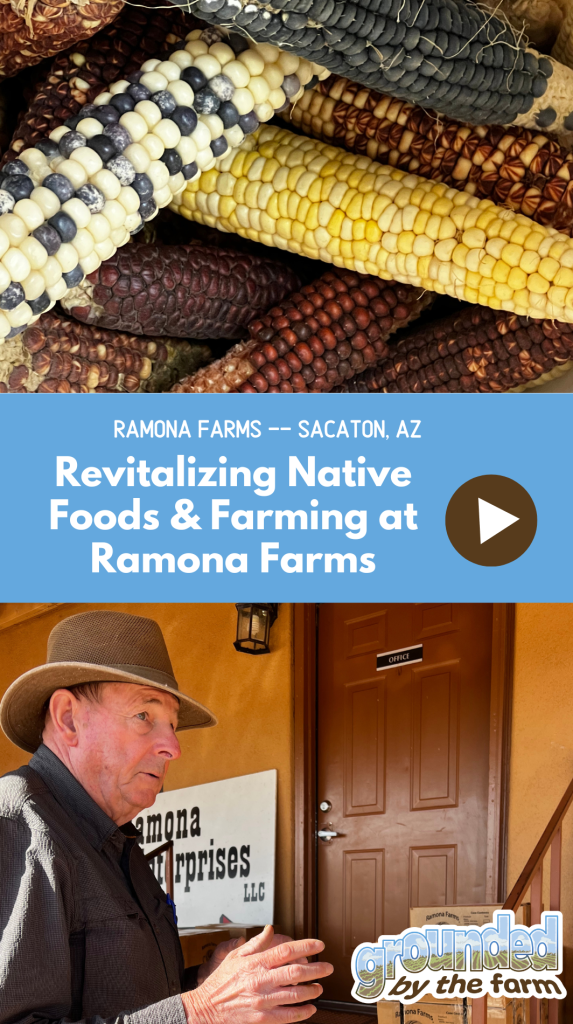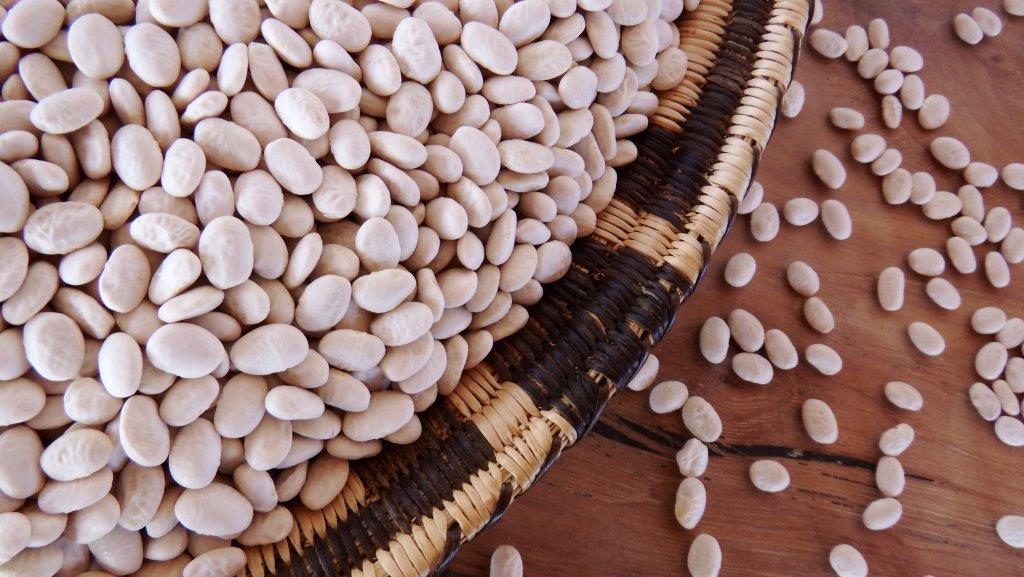We continue discussions about native foods and farm on the Gila Indian Community in Arizona (hope you caught part 1 talking the culture, history & water of the Pima people). In this episode we talk with Terry Button about the work he and his wife Ramona are doing at Ramona Farms. Terry shares some of the foods the Pima people have eaten for generations, sharing the roles of corn and tepary beans and some of the foods that can be foraged in the desert.
You can see the transcript that was produced via AI here.
Growing “Indian Corn”
I’ve talked corn with a lot of folks (you may remember Dave who makes his own masa and polenta in Iowa). Terry & Ramona go even deeper into diverse varieties of corn, some he refers to as Indian corn for it’s role as a traditional staple for the Pimas. I love that he shared some of the ways they’re cooked locally!
Terry introduced me to pink corn, which the people of the Gila River indigenous community have cultivated for centuries. This corn is a star in both taste and appearance he says, featuring stunning hues of pink that add a touch of vibrancy to any dish.
But what makes this corn truly extraordinary is its versatility in Native American cuisine. From the savory delicacy of tamales to the hearty satisfaction of pozole (mentioned as a must have food for the holidays in Mexico), pink corn takes center stage, lending its unique flavor and distinct texture to traditional dishes that have been lovingly passed down through generations.

I love that there are red corns too and that they have selected for cobs that are solid red as well as continuing to plant some of the red and white marbled. How appropriate that they call it Ramona red! And he’s also grown a good bit of sweet corn that is more mainstream today.
Tepary Beans — A Unique Tribal Food
I haven’t had a chance to really learn about tepary beans before but they are central to the diets of native peoples in Arizona and other parts of the Southwest as well as Mexico. These beans have a rich history and are deeply tied to the heritage of the land.
I’m not sure you could find anyone more excited about tepary beans — Terry absolutely loves them and it shows! He emphasized the diversity of colors, with varieties ranging from creamy white to vibrant brown. Each variety brings unique flavors and uses of tepary beans.
When it comes to flavors, Terry described the white tepary bean as having a milder, almost sweet and buttery taste. On the other hand, the brown variety exhibits a nuttier flavor, creating a delightful contrast. Black teparies are less common, take longer to cook and have a rich robust flavor with a finish a bit of a chocolately finish.
These unique flavors make tepary beans a favorite among bean connoisseurs like Terry, and their versatility allows them to be incorporated into a wide range of recipes. He says whether cooked up as a hearty soup, included in a flavorful chili, or added to refreshing salads, these beans bring a distinct taste and texture to any recipe. And the family shares their favorite recipes on the Ramona Farms website.
With their high drought tolerance and disease resistance, tepary beans are not only a staple ingredient but a crop that does really well on the reservation.
A Tour of the Farm
He took me for a drive around the farm and reservation. You’ll see that they were baling hay and still planting some cotton when I was there in early May. All of that is also discussed in the podcast episode!
Castmagic is the AI tool (link to Castmagic & give me a referral fee that doesn’t impact your cost) that helps with some of the content shared here and on social channels. It helps me do more faster since I don’t stare at a blank screen.




